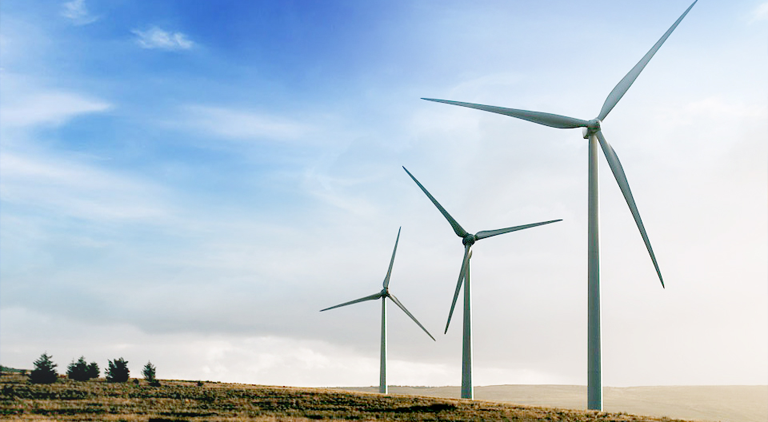Tropical optimisation of mounting structures
By EPR Magazine Editorial September 5, 2019 7:22 pm IST
By EPR Magazine Editorial September 5, 2019 7:22 pm IST

The recent intensity of natural disasters has traumatised the nation. This reminds us of having adequate performance and safety standards in action. Industry experts discuss on utilising solar rooftop arrays in possible sustainable ways to endure nature’s cataclysm.
Extreme weather conditions have been world’s major concern. Unavailability of sufficient technological parameters, infrastructure and sustainable ideas has led to huge losses. With the increasing inclination and adoption of solar energy, most countries are able to ideate sustainable ways to withstand natural calamities like floods, earthquake, and hail storm, among other major cyclonic and natural calamities.
Ability of rooftop arrays to sustain natural calamities
Rooftop solar installations are susceptible to natural calamities like earthquake, floods, cyclones primarily which may result in damage to the assets. Rooftop arrays face disruption from all the three depending upon the type of roof, height and nearby structures that surrounds the installation.
Rooftop arrays are surviving multiple hurricane hits and panels barely feel hailstorms. But that doesn’t mean we shouldn’t be concerned as natural disasters get worse. Discussing the performance ability of arrays, Manoj Gupta, Vice President, Solar & Waste to Energy Business, Fortum India Pvt. Ltd says, “While on ground, solar arrays can still be at risk of being damaged by wind. So, trackers have got to be better at handling high-wind events because of improved designs and advanced sensors. Instead of depending on heavy steel to keep systems in place, control sensors can optimise stow angles in relation to wind strength to safely position tracking arrays during storms.”
Shilpi Dangi, DGM Engineering, Gensol Engineering Ltd. in their view says, “A rooftop should always be installed at height of 8 feet from ground. Even if it mounted on a single ground floor house, the solar arrays face less chance of facing flood damages in urban or rural areas. Still, the associated electrical components like inverters, LT panels, cables, batteries and UPS do face risk of inundation and cause short-circuits, in worse scenario.”
However, earthquake proof designs can be factored for solar arrays being designed for ground mounted projects, but in case of rooftop assets, the building strength adds as base element. If the building design is not in line with local seismic zone factors in case of earthquakes, the entire asset falls prey to destruction posing.
Kuldeep Jain, BU Head EPC, Vikram solar says, “The best in class solar panels are now being equipped with higher wind and snow load capacities to easily survive natural calamities and continue to produce green energy. Additionally, efficient insulation solutions are present to protect the wiring and battery attached to the panels in case of natural calamity.”
Picking the right EPC contractor with experience in installing rooftop solar in different geographical locations, upholding quality and performance standards is required. This will help the buyer to get assurance on power generation through rooftop solar plants even in extreme conditions.
Shashikiran NK, Managing Director, Arushi Green Energy (India) Pvt. Ltd. said, “Solar rooftop arrays are designed to withstand local conditions; factors such as wind speed and rain, are taken into consideration. As we have seen in Vishakapatnam, a cyclone did affect the solar rooftop, but not irreparably and were brought back into operations in a short period of time.”
Though India is on a brim of suffering to natural calamities, Bharat Bhut, Director, Goldi Solar Pvt. Ltd .says that the rooftop arrays are capable enough to provide mechanical strength to the solar PV system. These structures must be fixed in such a manner that it can withstand calamities and not just the wind speed up to 150 km/h for which it is tested on a regular basis.
“We emphasise that the instructions mentioned in the manual has to be followed diligently to ensure the height and angle of the structure is appropriate while installation. However, the raw material used in frame plays a vital role like the thickness of the frame which should not be compromised helps in strengthening the structure”, Bhut added.
Solar panel safety practices to engage during flood
The rooftop arrays are capable enough to provide mechanical strength to the solar PV system.A rooftop at 8 feet from ground, even mounted on a single ground floor house, can sustain in disaster.
Shilpi Dangi, DGM Engineering, Gensol Engineering Limited
Control sensors can optimise stow angles in relation to wind strength to safely position tracking arrays during storms.
Manoj Gupta, Vice President, Solar, Waste to Energy Business, Fortum India Pvt. Ltd
Efficient insulation solutions protect the wiring and battery attached to the panels.
Kuldeep Jain, BU Head EPC, Vikram solar
Pre-installation safety measures like wind speed calculations should be calculated to anticipate the intensity and gravity of flood.
Shashikiran NK, Managing Director, Arushi Green Energy (India) Pvt. Ltd.
We use cookies to personalize your experience. By continuing to visit this website you agree to our Terms & Conditions, Privacy Policy and Cookie Policy.